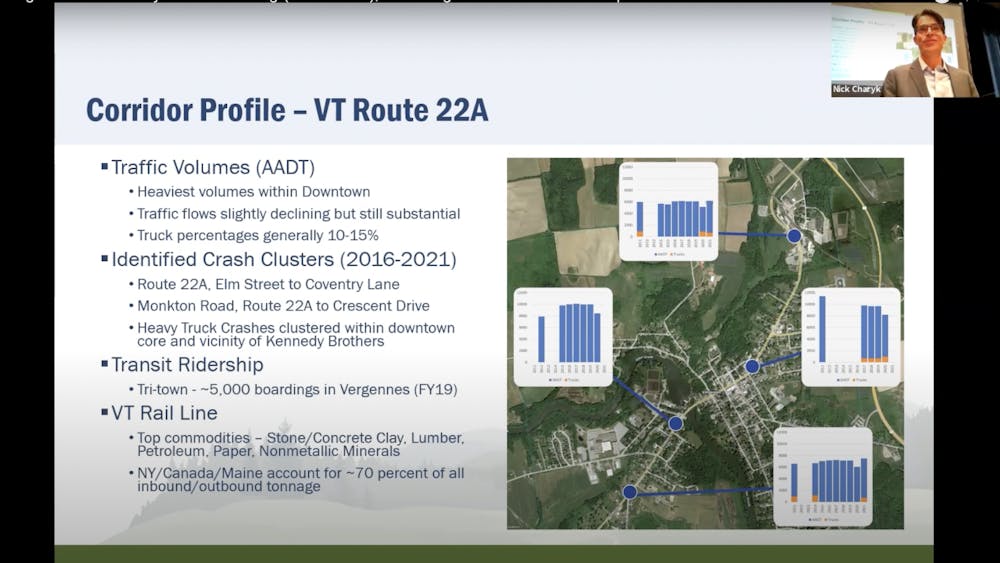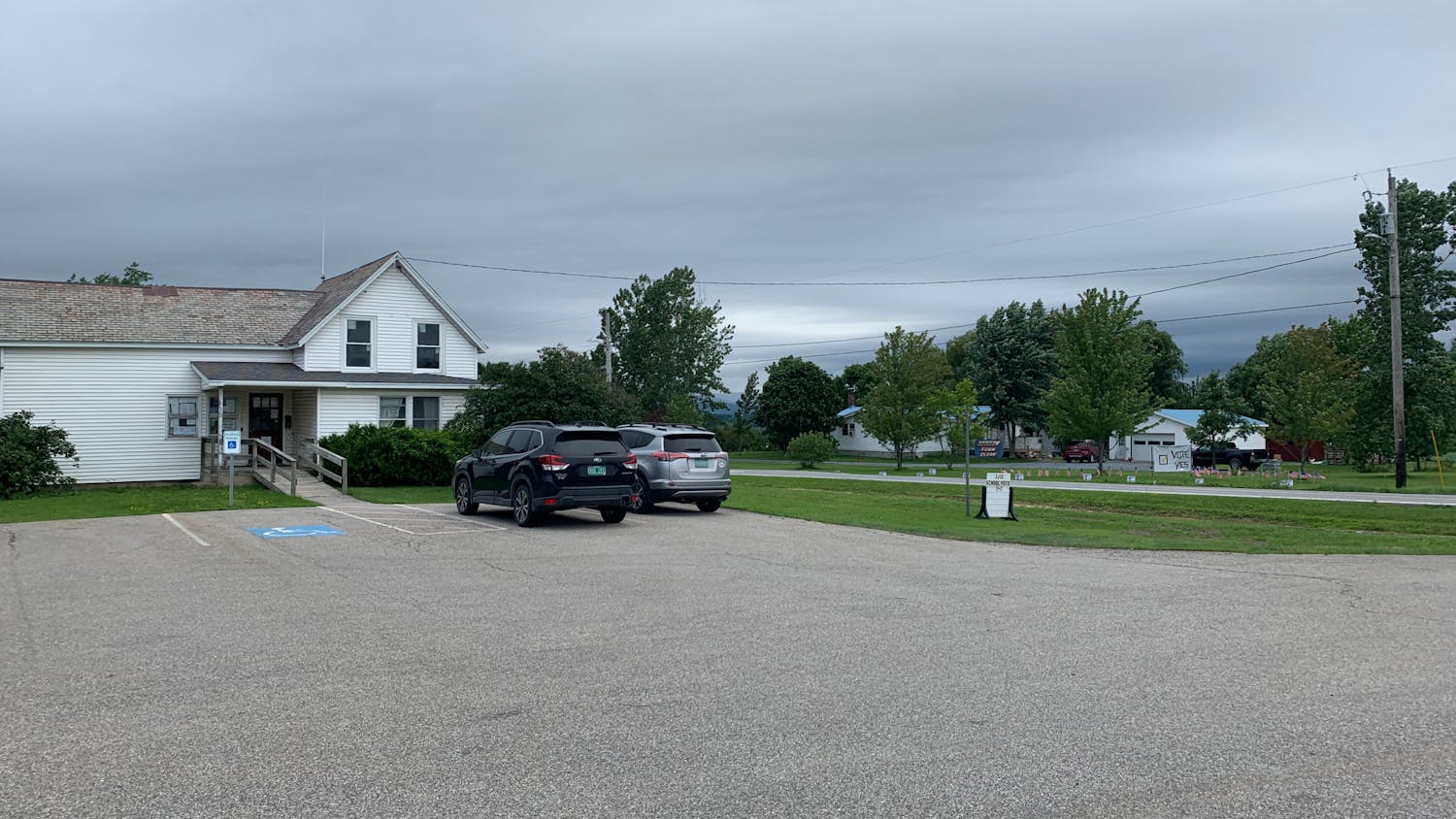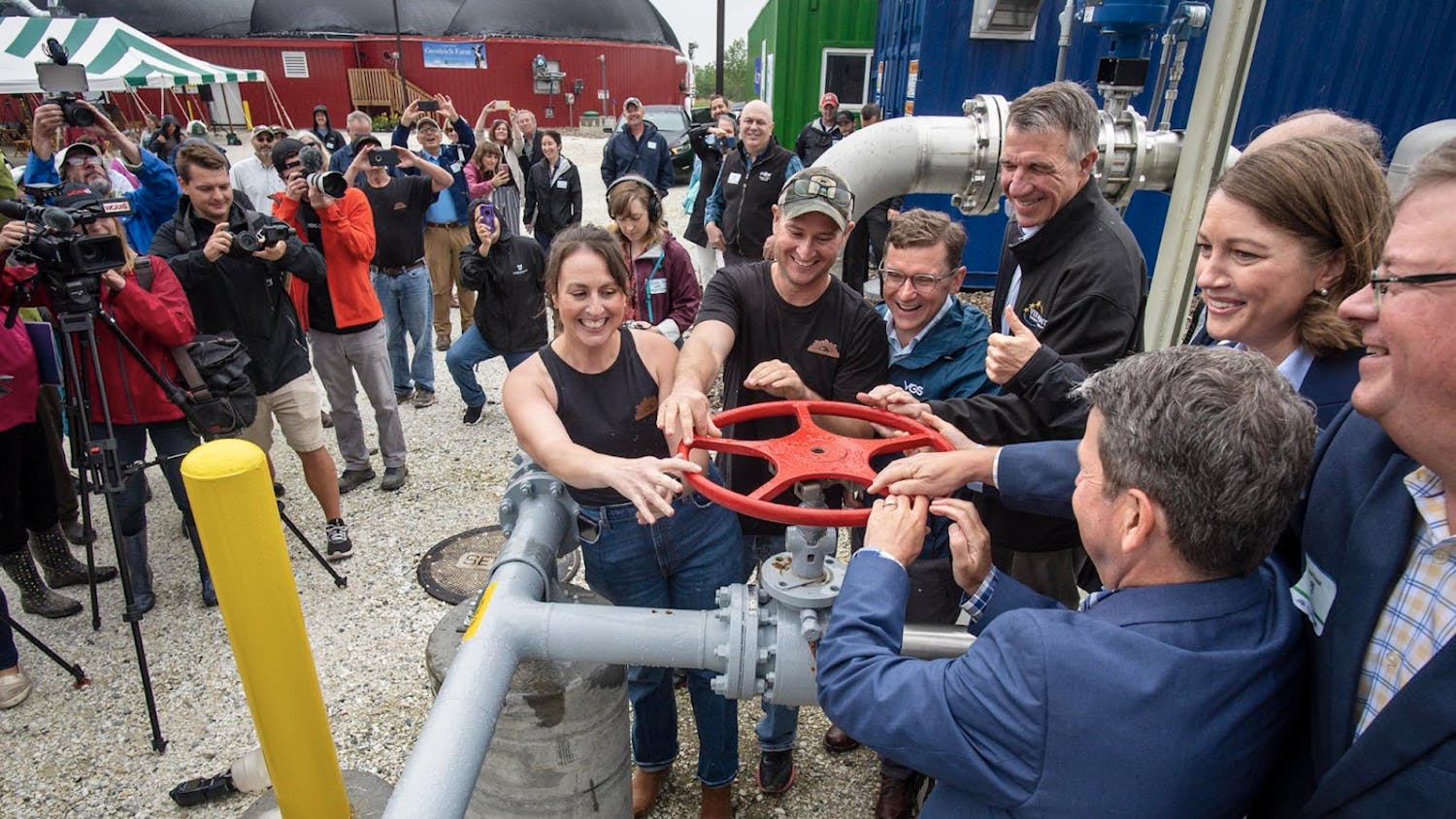Last Thursday, Nov. 4, the Vermont Agency of Transportation, in collaboration with the Regional Planning Commission, held a public meeting to discuss truck traffic in the town of Vergennes and the surrounding area. All participants in the meeting received a handout detailing the Planning and Environment Linkages (PEL) Study that aims to address the truck traffic problem and explore alternative transportation and planning options.
In previous studies, the town of Vergennes has attempted to gather public opinion to explore alternative options to Route 22A, which runs through Vergennes and is heavily used by trucks. Joe Segale, Vermont Agency of Transportation director of policy, planning and research, said that a study conducted in 1995 looked at various bypass corridors in Vergennes before settling on the central corridor.
Alternatives were examined in 1995, but there were concerns that alternatives to highways were not looked at closely enough and no progress was made to build upon alternatives and address these concerns.
“There wasn’t huge consensus on what to do at that point,” Segale said. A second study was conducted in 2002, which qualitatively looked at alternatives, such as keeping trucks on Routes 4, 7 and 30. However, similarly to the first study, there was no general consensus on a solution to the truck traffic problem or how to progress.
Last week’s meeting solicited public opinion through several real-time polls concerning the use of Route 22A through Vergennes, along with participants’ visions for the project. The polls found that the highest percentage of people use Route 22A for shopping or conducting business, with the second highest use being commuting to and from work. In another poll, some participants expressed desires for a concrete plan to come from this PEL study, as they were concerned about the construction’s potential proximity to their homes or workplaces.
Steve Chiaramonte, the transportation planning lead at WSP, an engineering firm, reviewed a profile of VT Route 22A, which found that traffic was heaviest in downtown Vergennes, where trucks account for 10–15% of the traffic flow. Based on studies of the area between 2016 and 2021, planners found that there were heavy truck crashes in the downtown area, specifically around Live Young Kitchen.
Conducted in 2019, the study that Chiaramonte references found that up to 800 trucks and over 500 tractor trailers pass through Vergennes on Route 22A each day. Along other routes, such as US 7 in Brandon and VT 116 in Bristol, in contrast, truck traffic flow is smaller but still significant.
“If you look at the pure municipalities elsewhere in the state, they don’t carry the burden of trucks that Vergennes carries every day,” Chiaramonte said.
In order to address this issue, the two to three year PEL process is building on four principal themes: equity, mobility, environment and economy. Chiaramonte noted that outreach is of utmost importance, while it is also important to maintain a high degree of transparency as the project unfolds.
“We want to be as inclusive and visible as we can,” he said.
Chiaramonte also explained the competing uses of 22A, and the resulting need for a balance between these needs. “We need to be environmental stewards”, Chiaramonte continued. Given that this is a transportation project, it is a necessity to not disrupt the natural landscape or ecological relationships in the area. Finally, it builds on the theme of economic vitality, stressing the importance of the corridor both locally and regionally.
This most recent study builds upon the previous 2019 study. As outlined in the “Purpose and Need Statement,” the study focused primarily on supporting economic vitality and environmental factors regarding planning and traffic flow, while simultaneously supporting varied methods of mobility and land use. “The Purpose and Need Statement is really critical because it’s the yardstick by which we will measure the different solutions,” Segale explains.
Thursday’s public meeting also solicited attendees’ opinions regarding to what extent the 2019 statement had to be adjusted in order to fully address all current issues. Forty five percent of participants indicated that they believed the 2019 Purpose and Need Statement was “mostly adequate” in its undertakings.
Through incorporation of the PEL study into planning, the town of Vergennes hopes to streamline planning efforts into an actionable project, while minimizing the project’s timeline. The department hopes to first develop an improved Purpose and Need Statement, and then create a list of viable route alternatives. “All alternatives are on the table; however, that first litmus test will be the purpose and need statement,” Pounds says. They plan to limit this list by laying the alternatives over existing land use to see which are the most feasible, and then advance this list of alternatives for federal environmental review through an open and transparent process, allowing them to gain federal funding for the project, Pounds explained.
“We’re really trying to move at the speed of trust here,” Segale explains. The study will continue to gather input from the public as well as local selectboards, truck associations, the city council, and focus groups. The study also conducted a Vermont Truck and Bus Association survey in September of 2021, which found that almost 70% of trucks do not have an origin or destination in Vergennes, and many respondents would be willing to use Route 7 as an alternative route.
The meeting ended with a Q&A session in which participants related concerns and ideas regarding the project. John Stroup, the chair of the school board, stated his concern with the declining population in Vergennes, and stressed the importance of building a new bypass for population growth. Another participant proposed using water corridors to transport freight on barges, which would reduce wear and tear on Route 87 and 22A, while minimizing truck traffic.
As the truck traffic issue persists in Vergennes, the PEL study aims to explore alternatives to route 22A and get funding on a relatively short timeline in order to carry out the project.

Emily Hogan '24 (she/her) is a Local Editor.
She is studying Environmental Policy with a minor in Math. In addition to writing and editing for the Campus, she also dances with the On Tap dance troupe and serves on the Environmental Council. She has previously worked with the Sustainability Solutions Lab at Middlebury.




